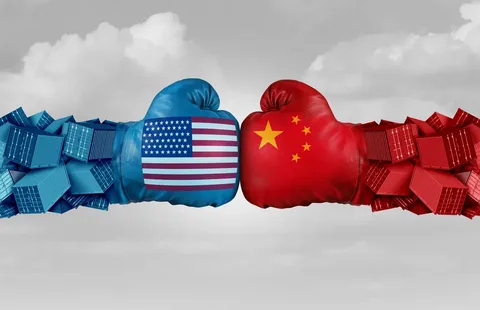Trade war tensions are increasingly burdening China’s economy, as factory-gate deflation is deepening and consumer prices are sliding and threaten to weaken efforts at 2025 recovery. The latest figures offer a bleak outline: April was the third consecutive month of dipping consumer prices and a steep 2.7% drop in the Producer Price Index (PPI). With slowing domestic demand and international trade under stress, China is increasingly struggling to sustain the growth pace. Even after attempting to boost the economy, the continued deflationary trend is an indicator of structural vulnerability and the cost of ongoing tariff tensions with the United States.
Read More : Unilateral Tariffs Threaten Global Trade Amid High-Stakes US-China Talks
Consumer Prices Continue to Slide as Domestic Demand Remains Slow
In April 2025, China’s Consumer Price Index (CPI) declined 0.1% year-on-year—the third straight monthly decline. This steady decline is a result of muted consumer spending and an overall deflationary climate. Although prices were up slightly at 0.1% compared to March, the increase was not enough to alter the overall trend. Food prices fell 0.2%, service prices crept up by 0.3%, and transport costs fell, dragging down the index. Segments such as apparel (+1.3%) and shelter (+0.1%) experienced modest rises but were not able to make up for the overall slowdown in expenditures. Dovish consumer sentiment, together with high savings levels and insufficient stimulus effect, still weighs on local consumption.
Factory-Gate Deflation Delves Deeper as PPI Declined Precipitously
The Producer Price Index (PPI) declined 2.7% year-on-year in April, the sharpest fall in recent months and more severe than March’s 2.5% decline. The factory-gate deflation highlights China’s manufacturing industry woes, struggling with weak global demand and U.S. heavy tariffs. Manufacturers are compelled to cut prices in the face of rising inventories and sluggish order books. On a monthly basis, the PPI fell 0.4%. Averaging over the first four months of 2025, the index declined 2.4% year-on-year, showing that pressure is systemic and persistent. The trade war is an outsized contributor, making relief more and more elusive for export-oriented sectors.
Also Read: US-UK Trade Agreement Sparks New Era in Global Economics
Trade War and Tariffs Drive Chinese Exporters to the Edge
The China-U.S. trade war continues to place downward pressure on China’s economic stability. Despite brief injections of stimulus from an early-2025 pre-tariff rush in exports, the sustained effect of punitive tariffs has been apparent. Exports have lost speed, inventories are piling up, and profit margins are narrowing. Tariffs have decimated Chinese competitiveness significantly, causing manufacturers to bear costs or see their market share eaten away. Even though negotiations could soon resume, few signs are available of an early resolution. Since global demand becomes weaker and political tensions remain ongoing, China’s dependence on outside markets reveals it to be a victim of the external shock, and its ability to maneuver the policy space becomes restricted.
Policymakers Under Pressure to Prevent a Deflation Spiral
With deflation and uncertainty facing growth, Chinese policymakers are squeezed to implement an effective policy relief. Measures like interest rate cuts, tax incentives, and infrastructure spending are being considered to shore up demand. However, skepticism remains over how much these tools can counteract the deep-rooted issues caused by the trade war and internal imbalances. The government has already revised its 2025 inflation target down to around 2%, signaling tempered expectations. Analysts warn that without a robust recovery in consumer confidence and world trade war, these measures may provide only temporary relief.
As factory-gate deflation becomes more pronounced and consumer prices fall for a third straight month, China’s economic prospects are still precarious. The ferocious trade war still continues to put a strain on its export-driven model, with slack domestic demand making it increasingly difficult to recover power. Policymakers, with few remaining tools, will have to battle hard to stabilize growth without instigating additional imbalances.
For More Trending Business News, Follow Us 10xtimes News






